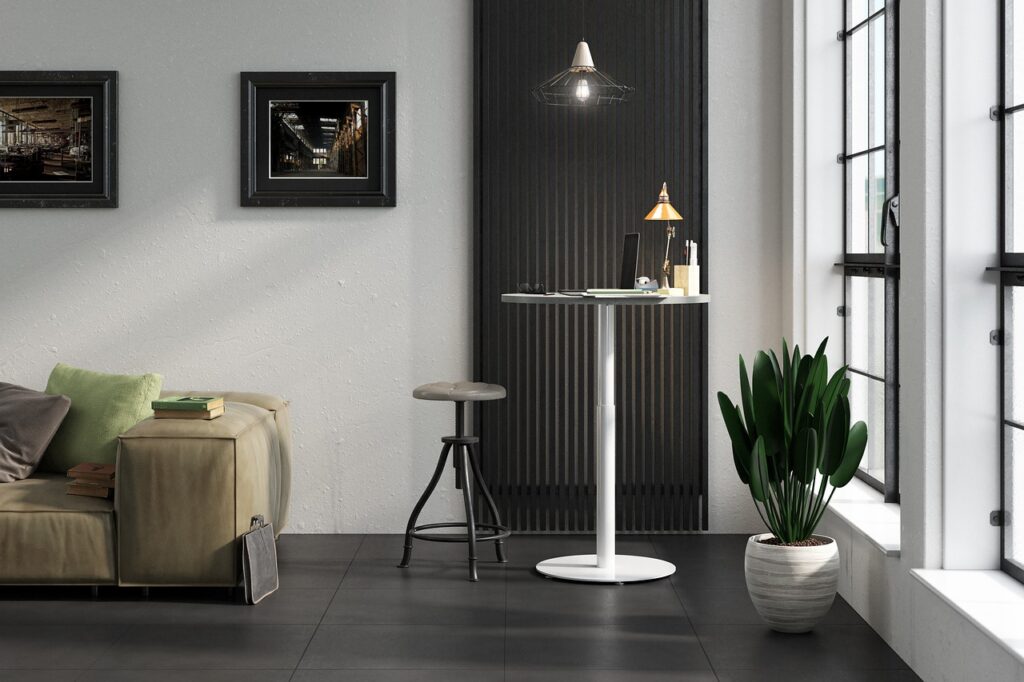In the wake of rapidly evolving work dynamics and technological advancements, the concept of the traditional office space is undergoing a profound transformation. The trend towards flexible workspaces is not merely a response to current circumstances but a strategic adaptation to the future of work itself. At AirBrickInfra, we recognize the pivotal role that flexible workspaces play in fostering innovation, collaboration, and employee well-being. Join us as we delve into the myriad benefits, design considerations, and future implications of embracing flexible work environments.

Introduction
The traditional 9-to-5 office model, once synonymous with productivity and structure, is gradually giving way to a more fluid and adaptable approach. This shift is driven by several factors, including advancements in technology, changing employee expectations, and the aftermath of global events that have reshaped how and where work gets done. As a leading advocate for progressive workplace solutions, AirBrickInfra is the best office interior designer at the forefront of exploring and implementing flexible workspaces that cater to the diverse needs of modern organizations and their workforce.
Benefits of Flexible Workspaces
Enhanced Productivity: By allowing employees to choose where and how they work best, flexible workspaces empower individuals to optimize their productivity. Whether it’s a quiet corner for focused tasks or a collaborative hub for brainstorming sessions, the flexibility to select an environment conducive to their workflow can significantly boost efficiency.
Improved Work-Life Balance: Flexible work arrangements promote a healthier work-life balance by offering greater autonomy over one’s schedule. Employees can better accommodate personal commitments, reduce commuting stress, and allocate their time more efficiently, leading to increased job satisfaction and overall well-being.
Cost Efficiency: For businesses, the adoption of flexible workspaces can result in substantial cost savings. Reduced real estate footprint, lower utility expenses, and optimized resource allocation contribute to a more efficient use of financial resources, which can be redirected towards innovation and growth initiatives.
Attracting and Retaining Talent: In an increasingly competitive job market, offering flexible work options is a compelling differentiator for attracting top talent. Millennials and Gen Z, in particular, prioritize workplace flexibility when evaluating potential employers, viewing it as a reflection of progressive corporate culture and employee-centric policies.
Agility and Adaptability: Flexible workspaces enable organizations to adapt swiftly to changing circumstances and market demands. Whether scaling operations, accommodating remote teams, or responding to unforeseen disruptions, the ability to pivot seamlessly is a strategic advantage in today’s dynamic business landscape.

Design Considerations for Flexible Workspaces
Modular Furniture and Layout: Embracing modular furniture facilitates easy reconfiguration of space to accommodate varying work styles and activities. From adjustable desks and movable partitions to versatile seating arrangements, the adaptability of furniture plays a pivotal role in creating dynamic work environments.
Technology Integration: Robust IT infrastructure and seamless connectivity are essential components of successful flexible workspaces. Providing reliable access to cloud-based tools, video conferencing capabilities, and mobile-friendly solutions ensures uninterrupted communication and collaboration across distributed teams.
Diverse Work Zones: Designating distinct zones within the workspace encourages diversity in work settings. Quiet zones for focused work, collaborative zones for team meetings, and social zones for informal interactions cater to the multifaceted needs of employees throughout the workday.
Natural Light and Biophilic Elements: Incorporating elements of biophilic design, such as natural light, indoor plants, and greenery, enhances employee well-being and cognitive function. Access to outdoor views and ample daylight not only improves mood but also promotes a sense of connection to the natural environment.
Flexibility in Policies and Protocols: Establishing clear guidelines and protocols that support flexible work arrangements is crucial for maintaining operational efficiency and fostering a cohesive organizational culture. Transparent communication, performance metrics, and accountability frameworks help mitigate potential challenges associated with remote work.
Future Implications and Trends
Looking ahead, the trajectory towards flexible workspaces is poised to continue evolving as technology evolves and societal preferences evolve. Key trends shaping the future of workspaces include:
Hybrid Work Models: Blending remote work with on-site collaboration to accommodate diverse preferences and operational requirements.
Virtual Reality and Augmented Reality: Innovations in VR/AR technology that enhance virtual collaboration and immersive remote experiences.
Wellness-Centric Design: Greater emphasis on integrating wellness initiatives into workspace design to support mental and physical health.
Data-Driven Insights: Leveraging analytics and workplace data to optimize space utilization, employee engagement, and operational efficiency.

Conclusion
In conclusion, the shift towards flexible workspaces represents a fundamental evolution in how organizations conceptualize and utilize their physical environments. At AirBrickInfra, we embrace this transformational journey by championing innovative design solutions that empower businesses to thrive in an increasingly dynamic and interconnected world. By prioritizing flexibility, collaboration, and employee-centricity, we are not just adapting to the future of work – we are shaping it.
As businesses navigate the complexities of a post-pandemic landscape and embrace the opportunities presented by digital transformation, the role of flexible workspaces in driving organizational resilience and success cannot be overstated. Join us in reimagining the workplace of tomorrow, where flexibility meets functionality and innovation knows no bounds.





